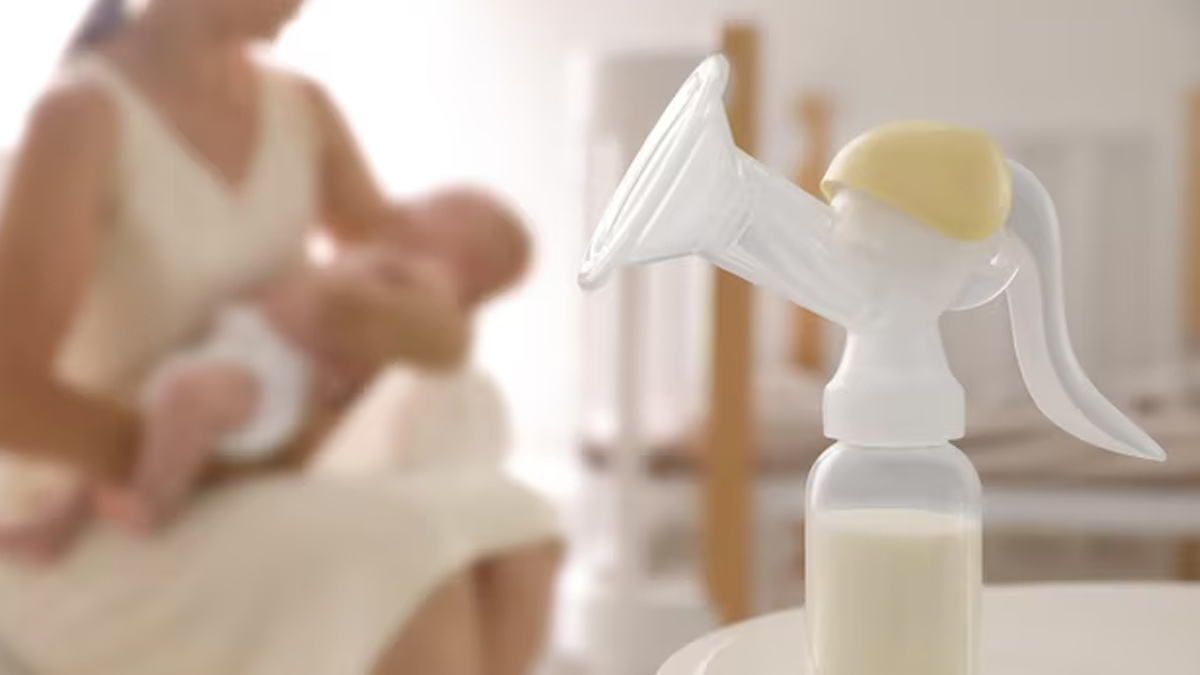
Providing the best nutrition and care for babies is always a top priority for mothers even amidst their busy lives. Breastfeeding is a cherished bonding experience, but there are instances when pumping and storing breast milk becomes necessary to ensure the well-being of their little ones. If you are a first-time or new mother, Dr Krishna Prasad, Consultant - Paediatrician, Motherhood Hospitals, Electronic City, Bangalore shares some helpful tips for you to make breastfeeding easy for you.
How To Use Breast Pumps
Choose the Right Pump: There are various types of breast pumps available, including manual, electric, and hands-free options. Select a pump that suits your lifestyle and needs. Electric pumps are generally more efficient for regular use, while manual pumps are portable and convenient for occasional use.
Find a Comfortable Position: Sit in a relaxed and comfortable position before starting to pump. Make sure your breast shields are the correct size, as an improper fit can cause discomfort and affect milk flow.
Stimulate Let-Down: To initiate milk flow, gently massage your breasts or use warm compresses before pumping. Visualising your baby or listening to their cries can also help stimulate the let-down reflex.
Pump Regularly: Consistency is key to maintaining milk supply. If you're away from your baby for an extended period, pump as frequently as your baby would typically nurse to ensure an adequate milk output.
Practice Hands-On Pumping: Combine hand expression with pumping to maximise milk extraction. Massage and compress your breasts while pumping to empty the milk ducts fully.
Also Read: Exclusive Breastfeeding or Formula Milk, How To Choose The Right One

How To Store Breast Milk
Use Clean Containers: Store expressed breast milk in BPA-free, sterile containers designed for breast milk storage. Consider using breast milk storage bags or bottles with secure lids.
Label and Date: Always label the containers with the date of expression to ensure that you use the oldest milk first. This practice prevents waste and ensures your baby receives fresh milk.
Refrigeration: Freshly expressed breast milk can be stored in the refrigerator for up to 3-4 days at temperatures between 32°F to 39°F (0°C to 4°C). Place the milk towards the back of the fridge, as it's the coldest part.
Freezing: If you need to store breast milk for an extended period, freezing is a safe option. Freeze milk in small quantities to avoid wastage. Breast milk can be stored in a standard freezer for up to 6 months or in a deep freezer for up to 12 months.
Also Read: Are You Planning to Donate Breast Milk? Here's A Guide

How To Introduce Expressed Milk to the Baby
Temperature: Expressed breast milk can be fed to the baby at room temperature or warmed. Never heat breast milk on the stove or microwave, as it can create hot spots that may scald the baby.
Slow Flow Nipples: When using a bottle to feed expressed milk, opt for slow-flow nipples to mimic the baby's natural feeding pace and reduce the risk of nipple confusion.
Skin-to-Skin Contact: While feeding expressed milk from a bottle, maintain skin-to-skin contact with your baby. This intimate connection promotes bonding and emotional well-being.
Also Read: Breastfeeding After 35: Expert List Tips to Keep Your Baby Healthy
Watch this video on how to breastfeed the right way:
In conclusion, these tips might help mothers with the knowledge and confidence to pump and store breast milk properly. Refer to a healthcare professional if there are any questions as each personal experience might be different







